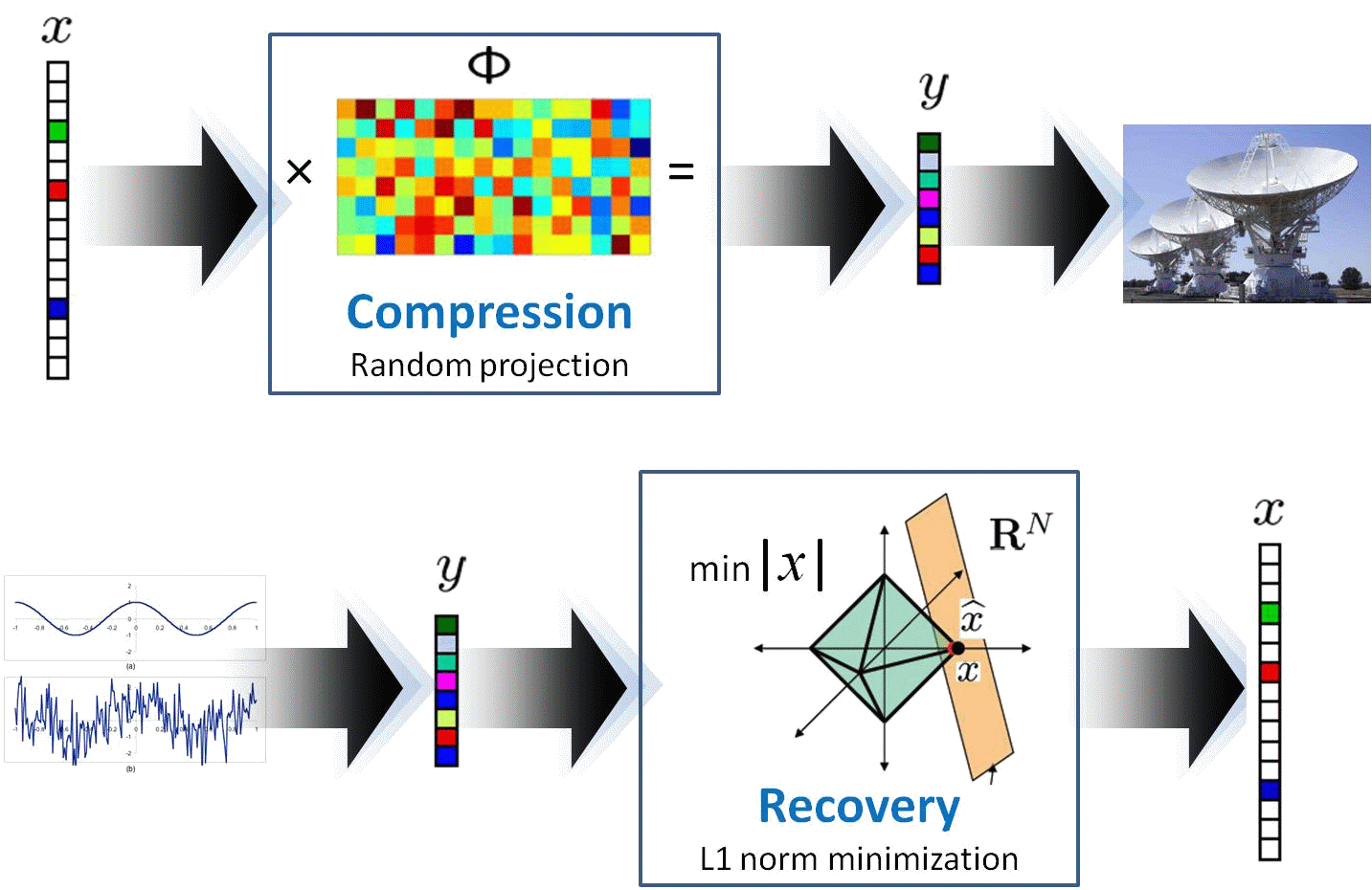Compressed Sensing

Compressed sensing may be considered as revolution in the world of signal processing. It is a new paradigm which enables recovering a signal from much fewer measurements than traditionally required by the Nyquist rate. It is particularly important in systems where measurements are costly like, e.g., magnetic resonance imaging (MRI).
Classical sensing devices (e.g., digital cameras) sample a signal at a high resolution and then proceed to source coding (e.g., jpeg) to get a compressed representation of this signal. In other words, a huge amount of data is captured and most of it is thrown away to keep only the most important parts.
Compressed sensing aims at sensing at a low resolution and directly capturing the important parts of a signal, thus, enabling the use of much simpler and cheaper sensors, e.g., low frequency AD converters.
The figure above shows a typical compressed sensing setup.
Related research topics and publications
Relay networks
- S. Corroy, R. Mathar, Strategies for Source/Sink Pairs in Amplify-and-Forward Gaussian Relay Networks, Proceedings: 48th Ann. Allerton Conf. Communication, Control and Computing, Monticello, IL, USA, September 2010.
MIMO communication
- S. Corroy, R. Mathar, Distributed Compressed Sensing for the MIMO MAC with Correlated Sources, Proceedings: IEEE International Conference on Communications (ICC 2012), Ottawa, Canada, June 2012.
Spectrum sensing
- A. Bollig, S. Corroy, R. Mathar, Joint Sparse Spectrum Reconstruction and Information Fusion via l1-Minimization, Proceedings: IEEE Vehicular Technology Conference 2012 Spring (VTC 2012-Spring), Yokohama, Japan, May 2012.
- S. Corroy, A. Bollig, R. Mathar, Distributed Sensing of a Slowly Time-Varying Sparse Spectrum Using Matrix Completion, Proceedings: International Symposium on Wireless Communication 2011, Aachen, Deutschland, November 2011.
Related projects
- CLASS - Compressed Localization and Spectrum Sensing for Cognitive Radio and Distributed Radio Surveillance
- CoSeCo - Compressed Sensing for Mobile Communication Networks
Related student work
- Diploma thesis Compressive Sampling for Distributed Spectrum Sensing in Wireless Communication Networks
- Diploma thesis Compressed Sensing for Mulithop Relay-Networks with Correlated Sources
Contact
***
Aktuelle Informationen gemäß Art. 13 DS-GVO:
Datenschutzhinweis ***
Impressum ***

